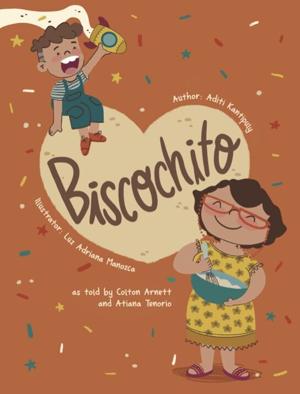Author and physician Aditi Kantipuly has combined her medical knowledge and storytelling skills to create a children’s book that addresses a rare genetic disorder. The book, titled Biscochito, offers insights into cerebral cavernous malformation (CCM), a condition characterized by clusters of abnormally thin-walled blood vessels in the brain and spinal cord. This disorder can result in chronic headaches, seizures, and stroke-like symptoms. Notably, CCM is more prevalent in New Mexico than in other parts of the United States, with genealogical studies linking one variation of the disorder to early Spanish settlers in the region.
Currently pursuing her training in preventive medicine at a Canadian university, Kantipuly embraces a multifaceted approach to education. “I like to use different mediums of storytelling — through art, music — to explain science,” she said. While research continues into effective treatments for CCM, including efforts at the University of New Mexico Health Sciences Center, Kantipuly’s unique contribution lies in her literary endeavor.
A Family-Friendly Approach to Complex Topics
Biscochito, published in 2023, was developed in collaboration with a group of CCM patients from New Mexico. The narrative follows a grandmother with CCM who shares her experiences with her grandson while baking biscochitos, New Mexico’s official state cookie. Each cookie in the story serves as a vehicle for conveying information about the condition. Kantipuly believes that children’s books can serve as “gateways to knowledge,” making complex topics more accessible and less intimidating for families.
To initiate the project, Kantipuly sought funding from the Rare Disease Diversity Coalition, an organization focused on addressing the challenges faced by underserved populations with rare diseases. This connection led her to collaborate with the Alliance to Cure Cavernous Malformation, allowing her to delve deeper into the history of CCM in New Mexico. The cultural significance of biscochitos added a relatable touch to the narrative, which Kantipuly found essential in her writing process.
Community Engagement and Educational Outreach
In developing the book, Kantipuly emphasized the importance of involving individuals directly affected by CCM. She gathered feedback from the support group, refining the narrative based on their insights. “The way that the narrative evolved was through conversations with the support group and myself,” she explained. This collaborative approach ensured that the book accurately reflected the realities of living with the condition.
As part of her outreach efforts, Kantipuly partnered with the New Mexico Public Education Department to distribute copies of Biscochito to school libraries across the state. Anne Marlow-Geter, manager of the agency’s Safe and Healthy Schools Bureau, confirmed that the department provided copies to 50 elementary schools, making the book a valuable resource for young readers and their families.
The book has already made a significant impact on families affected by CCM. For instance, 8-year-old Sakura Tafoya, a CCM patient from Santa Fe, has two copies of the book—one for home and one for her school library. Her father, Jared Tafoya, noted that Sakura read the story to her class last year, highlighting the importance of sharing knowledge about the condition. “The whole thing behind the book is, CCM is like a legacy — like a good recipe for biscochitos,” he remarked.
Kantipuly’s effort to merge science and art through Biscochito not only educates young readers about a complex medical condition but also fosters empathy and understanding within the community. By making this information accessible and engaging, she hopes to encourage conversations about CCM and support those affected by it.







